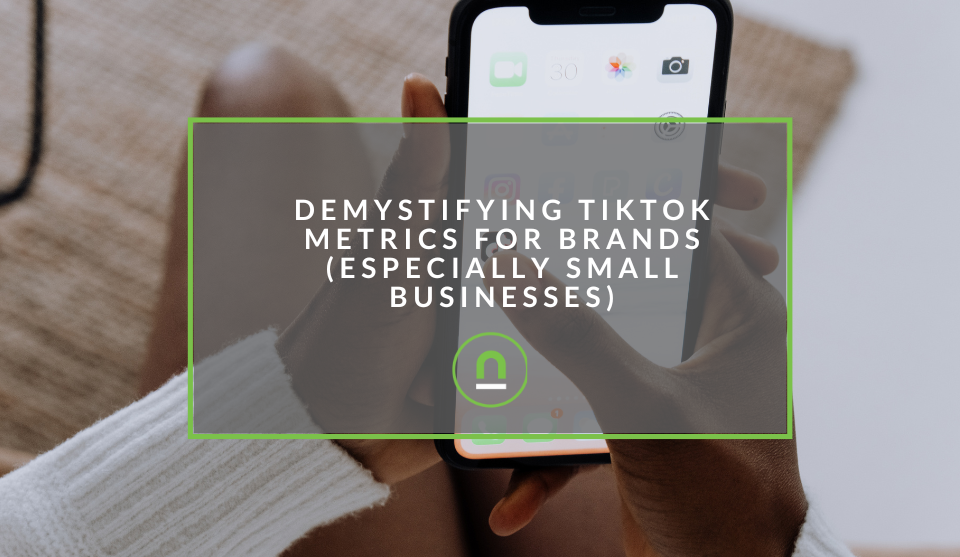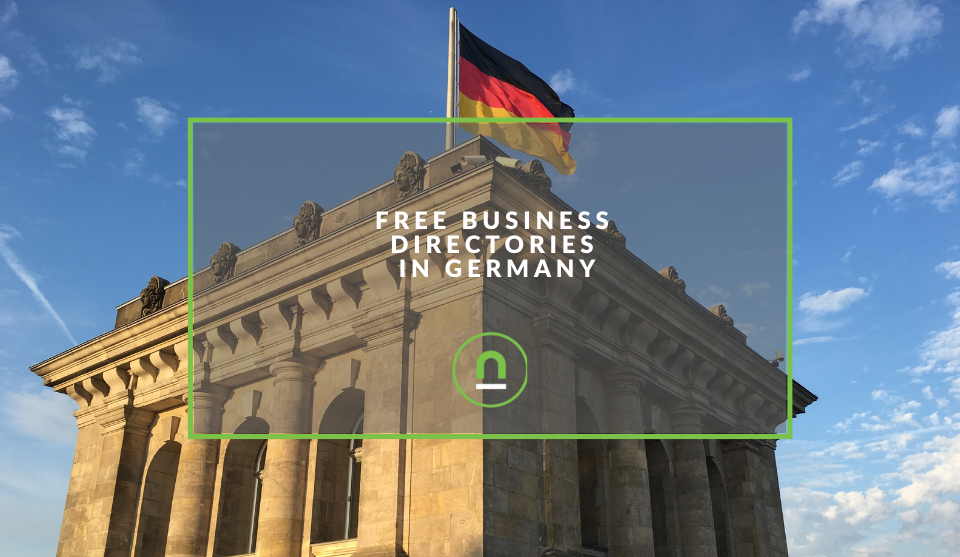Recent posts

Money Talks
The Intricacies of Trading Crypto vs. Forex
03 April 2024

Industry Experts
5 Effective Ways to Drive Traffic to Your Website
19 March 2024

Fur, Fins & Feathers
How To Maintain Your Dog’s Oral Hygiene At Home
14 March 2024

nichemarket Advice
Demystifying TikTok Metrics for Brands (Especially Small Businesses)
13 March 2024
Popular posts
Extravaganza
Trending Music Hashtags To Get Your Posts Noticed
24 August 2018
Geek Chic
How To Fix iPhone/iPad Only Charging In Certain Positions
05 July 2020
Extravaganza
Trending Wedding Hashtags To Get Your Posts Noticed
18 September 2018
Money Talks
How To Find Coupons & Vouchers Online In South Africa
28 March 2019
8 Reasons Why Customers Abandon Their Carts
27 August 2017 | 0 comments | Posted by Che Kohler in Shopaholics
As an online business, there are so many metrics to consider and we can capture these metrics, look at the numbers and trends all you like but the one key metric that trumps all will always be your bottom line, how many sales you've made, subscriptions, leads or downloads you're driving. One of the key influencers in whether an online business lives or dies is their check out process and while this can be different for products, services and industries some principles remain universal and that what I'd like to tackle in this post. The universal truths behind why your customers are essentially walking out the door empty-handed.
Too externally focused
If you're currently playing in the online space, you're probably more focused on attracting more traffic than getting the most value out of the visitors you already receive. The majority of start-ups and even scale-ups in the online space do not have resources for specialists in CRM or User experience to help them spot trends and evaluate their customer journey and this is where plenty of missed opportunity trickles out of your business. So if you're short on these resources how do you know if your abandon rate is a problem?
Tracking your user flow
If you have not already, you should install Google analytics on your site and set up a conversion/goal funnel report. This report will provide you with key insights on where you're losing customers during the checkout process. Once you have this data and you're seeing a radical drop off it could be due to a number of reasons. So how do we identify the problem?
Why do customers abandon purchases?
First, we need to look at the many reasons why customers abandon online purchases and then we can look at relevant solutions for your check out flow.
- Being forced to create an account
- Struggling with complicated checkout processes
- Unexpected delivery costs
- Concerns over security
- Pushed into booking/checkout flow too soon
- Booking/check out a one size fits all
- Booking/check-out flow not mobile friendly
- Booking/check-out flow not accessible across devices
1. Being forced to create an account
It's a known fact that if users create an account they are more likely to place a repeat order, making it easier to maintain a relationship with them. Let's be honest; those are two pretty good reasons to push your account creation agenda.
However, not everyone visiting your site or making a purchase wants to deal with those additional account creation steps just yet. So how can we give clients what they want, without damaging the user experience and increasing cart abandonment?
Pick your moment
The majority of users didn’t come to your site to create an account. They came to buy something. If you let them buy first, they will be happier, less likely to give up, and more open to creating an account. So wait until they have finalized their order, and at that point ask them if they want to create an account. But when you do ask, make it easy. So wait until the end of the checkout process before asking users to create an account.
Make account creation simple
Creating an account should require nothing more than picking a password once the user has finished making a purchase. After all, you have collected their email, shipping address, and other details. Creating an account should require nothing more than picking a password once the user has finished making a purchase. But don’t require users to provide some convoluted password.
Instead, let them go with any password they want. If the password they pick is insecure, don’t stop them. Instead, warn them and offer advice on how to improve it.
Give people a reason to create an account
If you aren’t going to force users to create an account (and let's be clear, you shouldn’t), then you need to give them a good reason to do so. What value does creating an account offer them? Does it let them track their order, get a discount, or access exclusive information? Make sure you make these benefits apparent.
Make account value obvious
Make the value of creating an account obvious, let them know things like access to exclusive discount, express check out process or ability to fulfil a monthly subscription, something that enticed the user to want an account with you.
2. Struggling with complex checkout processes
Online businesses love to add fields to their checkout process. After all, the more they know about users, the easier it is to persuade them. What’s more, they’re right! But what they fail to consider is the cost of adding ‘one more field’. So how should we respond?
Ask the client how they are going to use the data
Let’s be honest, adding one field to a form doesn’t have a huge impact on abandonment. But it will have a small impact and that becomes an issue at scale. Even a tiny percentage of users giving up because of too many fields can cost a lot of money when you have a lot of users! That might be a price worth paying if the client makes good use of that extra data and attracts more users.
But are they? There is a huge difference between gathering data that they will use daily and data that is ‘nice to have’. There is a huge difference between gathering data that they will use daily and data that is ‘nice to have’. That is why I recommend sitting down with the client and discussing the issue. Ask them how they intend to use the data and how that will help lead to more sales. If he or she is confident that it will offset any abandonment, then it might not be a bad idea.
Validate your hypothesis
Once you have discussed adding the field, make sure you test your decision. Consider split testing a version of the checkout with and without the extra field. If you don’t have the traffic for that, try some usability testing and track the time to complete the task. Even if you do roll out the extra field, remember to revisit the issue further down the line.
Did the client make use of the data as they said they would? Did it create the desired returns? Does having that data outweigh having more sales?
Pick your moment
If you do add the extra field, consider adding it to the end of the checkout process just as I suggested for account creation. That means it will not impact cart abandonment, while the client still gets the data they want.
3. Unexpected delivery or extra costs
Users tend to presume a site is being manipulative when it hides the additional cost before checkout. We think it wants to make the product appear cheaper than it is. However, that is often not the case. Often it is because it’s hard to show delivery until the user has selected a product and provided an address. This is not only true for your eCommerce shopping sites but travel booking and subscription sites, or any check out that inflates the final price from your original purchase price with extra costs like insurance, SMS confirmations, etc.
Consider offering ‘free’ delivery
Of course, one option is to provide free delivery by rolling the cost into the price of the item. That or have a universal delivery charge. A free or standard delivery charge is more user-friendly. But many retailers are reluctant to do this because it tends to raise prices that make the site appear less competitive. So if that is not an option, what should we do?
Show a clear estimate
t is so easy to get hung up on edge cases. We tell ourselves we cannot show delivery prices because if the user lives in some obscure place, it won’t be accurate. As a result, the majority of users get incomplete information for the sake of a handful. As a result, the majority of users get incomplete information for the sake of a handful. Instead, give people an estimated delivery cost next to each item. Obviously, this price won’t be 100% accurate depending on where people live and how many things people buy. But it will be a guide. You could even show a “delivery from” price and display the minimum delivery cost it might be.
Provide a cost calculator
Make sure your cost price updates automatically during the check out process and shows users a break down of what costs are, why they are increasing and if they're happy with these additional charges. Always give users a clear indication of what the final charge will be and give them control over making the most informed decision. Managing expectations is always a better option than trying to sneak through additional costs because people do not read or are in a hurry.
4. Concerns over security
So far, we’ve blamed the client for all the reasons users abandon their shopping baskets. But when it comes to security we’re our own worst enemy. That’s because we’re so comfortable with digital that we forget others are not.
When it comes to security we’re our own worst enemy. To digital aficionados like us, it might seem like madness, but there are still many people out there who are hesitant about buying online. They have read about the rise of credit card fraud and online scams, and it’s left them nervous. So how can we reassure them?
Provide clear, simple messaging
Reassuring users all comes down to clear communication. We try to reassure users by adding things like payment provider, security providers logos to our site, but these are meaningless to the average person.
Add independent and recognized credibility
One way to reassure users about the ‘credibility’ of your site is to link to popular publications that have written about you.
Migrate to HTTPS
Obviously, the most important thing you can do is ensure that the site is secure and running on HTTPS especially your check out process! Browsers have become increasingly sensitive to non-HTTPs sites and are pushing out warnings when visitors place sensitive information on non-secure sites, they also provide a strong indication that a site is secure with the new secure padlock icon next to the URL if a site runs on https.
For more on HTTPS check out our article HTTPS Migration Check List For The Best Results
5. Pushed into booking/checkout flow too soon
If you've gotten this far you've noticed we're either blaming website set up or the client but what about marketing? One of the most popular marketing practices that drive abandon carts is pushing users into your checkout flow too soon. In the world of digital marketing, there are various ways of driving traffic to your site, from paid search, organic search, email, social media and the list goes on.
When a user clicks on an ad more often than not they're expecting more information and not being forced into buying. To the user it seems spammy, it seems like you don't care and it also seems like you're needy which are all flags that generally put off potential clients.
Show relevant information
The majority of eCommerce clients do not purchase on the first visit as they want to become more familiar with your site and that means they're looking for information and trust signals prior to purchase. Depending on the marketing messaging make sure the page the user visits upon the click has content that fits their intention behind the click. It may sound like a no-brainer but you would be surprised at how many eCommerce sites ignore this basic principle to their own detriment.
6. Booking/check a one size fits all
A check outflow is not a one size fits all and as you grow, as your products and client base increase there will be key differentiating factors that influence the booking process. While your current booking process may be adequate for the majority of clients it may fall short for others.
Get personal in the process
Using a bit of personalization can go a long way in this process, saving the users preferred payment method to reduce check out steps, reminding them the price is for a limited time only, stock is limited, how long this product has been on their wish list are all subtle cues that can drive users to purchase. Offering different check out options for users is a great way to get them to walk away with a purchase, options like express check out or cross-device check-out can be the difference between losing or gaining a booking.
7. Booking/check outflow, not mobile friendly
In this day and age with the growth of mobile this should be a standard best practise but for many, it's a secondary consideration.
Consider the smaller screen
When users enter your checkout process you have to consider the elements they are presented with, instead of clicks of a mouse they are now used to taps, swipes and scrolls. These 3 user actions need to be considered when designing the check out process for mobile. Another key consideration for mobile is allowing for a one-page checkout execution, for every page load that it takes to complete a purchase on mobile you will lose more and more potential sales, mobile users are impatient and are aware of their data costs on every page load. If you're perceived at wasting time and data you're not going to bag and tag that customer.
8. Booking/check-out flow not accessible across devices
As mentioned before mobile is on a growth curve eCommerce sites need to capitalise on and while you need to consider their user journey of the mobile shopper, equally businesses need to consider the user journey of the multi-device shopper. A multi-device/browser shopper could be someone who likes to do their research on their phones and complete their purchase on their desktop or laptop. While another popular type is those who research purchases at work but complete them at home.
Pick up where you left off
To capitalise on this kind of shopping behaviour you should allow users to pick up where they left off, the best way to do that is to push the account creation functionality. As users create shopping carts and are about to exit the site, whether in our outside the check out the funnel, prompt them to save their product selections or place in check out for later by creating an account. That way whatever happens in between their return you have their details to remind them their cart or products are still waiting for them.
The truth about cart abandonment
In reality, even if you follow all the advice in this article and plug up as many holes as possible, you’ll never stop all users from abandoning their basket. My parting advice to you would to firstly reduce fundamental mistakes when it comes to their checkout process.
Make sure you cover all issues that are within your control and have solutions and fail safes set out for issues that do pop up. Then finally, always be critical of your check out process and constantly evaluate and refine it as your customer needs change and your business grows.
Contact us
If you want to know more about improving your conversion don’t be shy we’re happy to assist. Simply contact us here
You might also like
51 FREE Business Directories In Germany
23 February 2024
Posted by Che Kohler in nichemarket Advice
A comprehensive list of business directory sites in Germany that allow you to add your business for free and gain some referral traffic, leads and li...
Read more5 Helpful Travel Planning Tips for Complete Peace of Mind
22 February 2024
Posted by Brigitte Evans in Hit the Road
A look at some of the pre-travel planning you need to consider before you leave for the airport in order to ensure your mentally prepared for what co...
Read more{{comment.sUserName}}
{{comment.iDayLastEdit}} day ago
{{comment.iDayLastEdit}} days ago
 {{blogcategory.sCategoryName}}
{{blogcategory.sCategoryName}}


